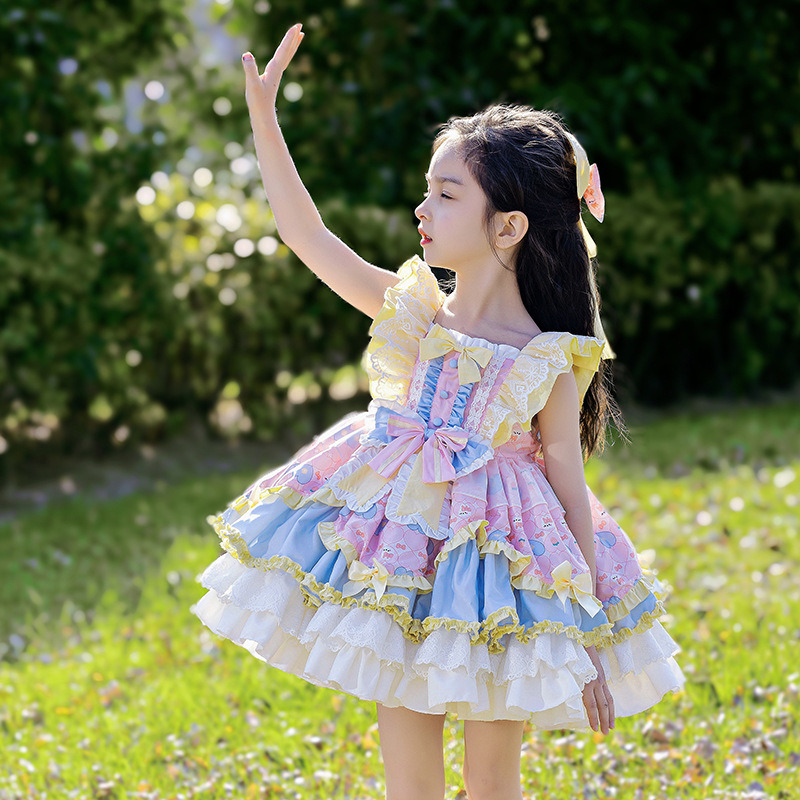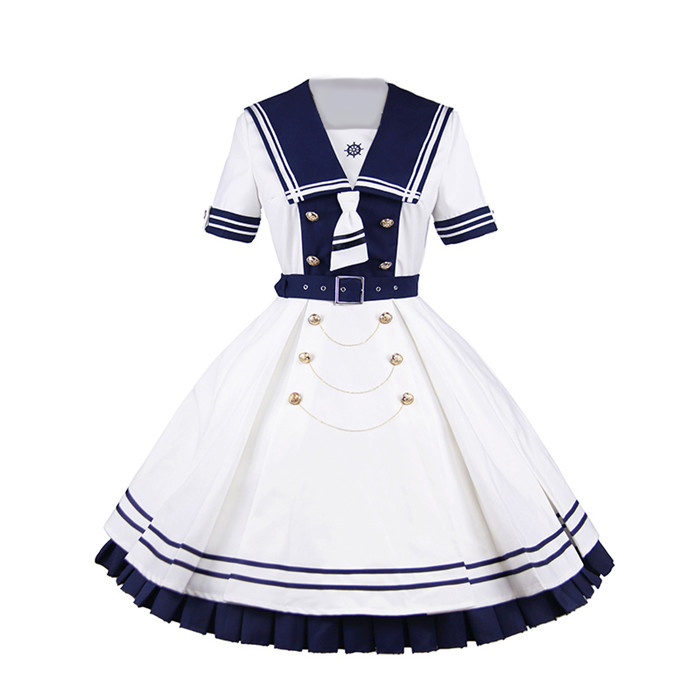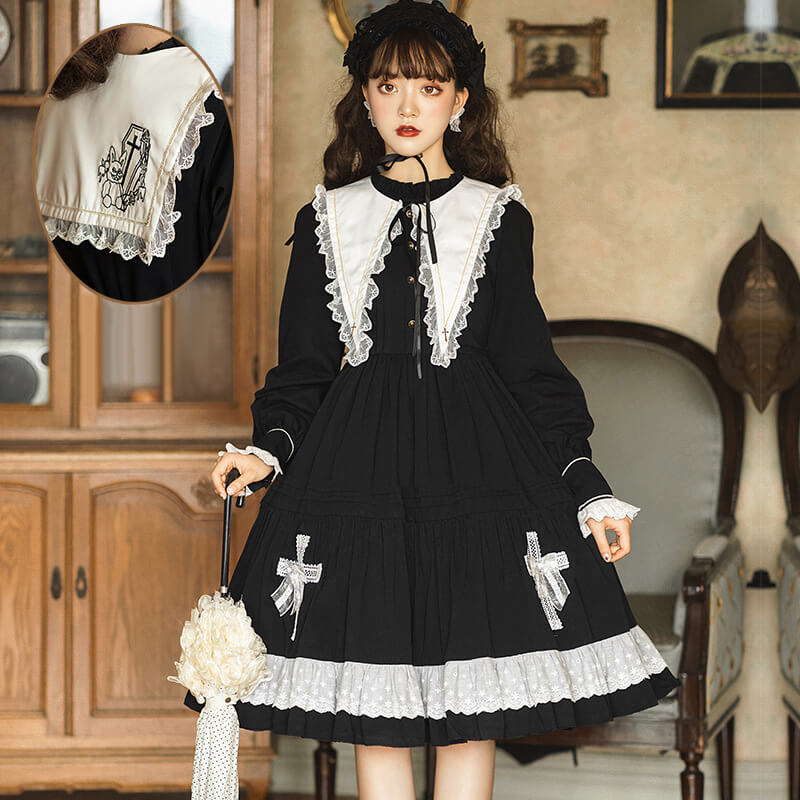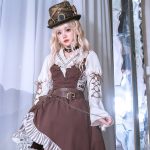Lolita fashion is a unique blend of Victorian and Rococo styles, which appeals to many. This style emphasizes modesty, femininity, and elaborate detail. The clothing is characterized by its petticoats, knee-length skirts, and ornate accessories. Although some may view it as merely a costume, it represents something deeper. For many, Lolita fashion is a way to express individuality and creativity. Each outfit tells a story and reflects a person’s unique aesthetic. Moreover, the joy in wearing a Lolita dress lies not just in appearance but in the entire experience.
The History Behind Lolita Fashion
The Origins of Lolita Style
Lolita fashion originated in Japan during the 1970s. It grew out of the Harajuku district of Tokyo, known for its vibrant subcultures. The style draws inspiration from Victorian and Rococo periods, emphasizing elegance and modesty. Early adopters began creating clothing that combined historical elements with modern flair. As time progressed, the community expanded, and so did the fashions. Today, various substyles exist, from Sweet to Gothic. Each substyle showcases unique elements while adhering to core Lolita principles.
The Evolution Over the Decades
Lolita fashion evolved significantly since its inception. Initially, the style was localized within Japan but quickly gained international attention. In the 1990s, it began to flourish in fashion magazines and boutiques. Online platforms allowed enthusiasts to share styles and inspirations. This globalization resulted in diverse interpretations of Lolita fashion. For instance, Western designers adapted Japanese styles to fit different cultural contexts. The subsequent appearances in pop culture also contributed to its rise. Iconic anime and manga featured characters often dressed in Lolita attire.

Understanding the Key Elements of a Lolita Dress
The Silhouette and Design
The silhouette of a Lolita dress is a hallmark of the style. Typically, dresses possess a bell-shaped or A-line silhouette. The use of petticoats and crinolines adds volume to the skirt, enhancing its shape. Fabrics often feature intricate patterns, ranging from florals to whimsical themes. Additionally, the design includes various elements, such as lace, ribbons, and bows. Each detail is carefully considered, ensuring visual harmony. For instance, the color palette often showcases pastel colors or rich, deep tones, contributing to an overall dreamy aesthetic.
The Accessories That Complete the Look
Accessories play a crucial role in achieving a complete Lolita look. Common additions include bonnets, headbands, gloves, and parasols. Each accessory serves to enhance the outfit while providing personal flair. For example, a lace-trimmed bonnet adds a touch of innocence, evoking a childlike charm. Gloves, meanwhile, contribute sophistication and elegance. Footwear also holds significance; many choose to wear Victorian-style shoes or knee-high socks. These components work together to form a cohesive appearance. Additionally, many Lolitas enjoy customizing accessories, allowing self-expression.
The Cultural Significance of Lolita Fashion
A Form of Personal Expression
Lolita fashion allows individuals to express their unique identities. Each outfit reflects a person’s personality, interests, and aesthetic preferences. Wearing Lolita can feel empowering, providing a way to embrace one’s individuality. Many fans report a boost in confidence when dressed in their favorite styles. Additionally, the attention to detail encourages creativity and artistic expression in design. From creating original outfits to styling hair and makeup, there are endless possibilities. This focus on self-expression fosters a sense of community among enthusiasts.
Bridging Cultures through Fashion
Lolita fashion bridges cultural gaps, connecting people from diverse backgrounds. Individuals worldwide admire the elegance and intricacies of the style. As the community grows, various cultural influences enrich the fashion. This exchange leads to innovative and refreshing interpretations. For instance, Western adaptations might incorporate local aesthetics while remaining true to Lolita’s core principles. These cross-cultural exchanges highlight the uniting power of fashion. They cultivate appreciation for different styles and traditions while promoting inclusivity.

The Community of Lolita Enthusiasts
The Role of Online Communities
The internet has played a pivotal role in fostering the Lolita community. Social media platforms allow enthusiasts to share outfits, tips, and experiences. Online forums and groups provide spaces for discussion and support. Additionally, they serve as platforms for organizing meetups and events. Such gatherings allow members to connect face-to-face, deepening friendships. Often, events include fashion shows, tea parties, and other themed activities. These interactions nurture a sense of belonging within the community. Online presence also allows newcomers to learn about the fashion easily.
Local Meetups and Events
Local meetups are essential for building connections within the Lolita community. Often organized through social media, these events create opportunities for enthusiasts to gather. Participants share their outfits, exchange styling tips, and simply enjoy each other’s company. Many also partake in photo shoots, capturing the beauty of the fashion. Such gatherings often include themed events like picnics or café meetings. These experiences foster camaraderie and strengthen community bonds. Additionally, they allow individuals to appreciate each other’s creativity. Events can vary in size, from small local meetups to larger conventions.
The Fashion’s Influence on Modern Style
Contemporary Adaptations of Lolita
Lolita fashion influences contemporary styles in various ways. Designers often draw inspiration from its elaborate details and unique silhouettes. Streetwear, for instance, may incorporate elements like oversized bows and lace. Additionally, mainstream fashion often references the aesthetic through collaborations and capsule collections. The influence is evident in popular culture, particularly in music and media. Numerous artists embrace Lolita elements in their visual presentations. This cross-pollination ensures Lolita maintains relevance in modern fashion.
The Impact on Fashion Trends
Lolita fashion also affects larger fashion trends. The emphasis on modesty has sparked interest in high-neck dresses and longer skirts. As sustainability becomes more prominent, many regard Lolita as a timeless option. Its handmade quality appeals to consumers seeking unique items. Furthermore, the movement towards body positivity has led to a more inclusive approach. The diversity of body types represented in the Lolita community encourages acceptance and self-love. This shift marks a positive change in fashion, challenging traditional beauty standards.

Creating Your Own Lolita Look
Choosing Fabrics and Colors
When creating a Lolita dress, fabric choice is essential. Luxurious fabrics, like cotton, chiffon, and lace, are commonly used. Choose colors that resonate with your style; pastel shades evoke a Sweet aesthetic, while deep tones suit Gothic Lolita. Additionally, consider patterns, such as florals or polka dots, to enhance your design. Start by sketching your vision, focusing on the silhouette and details you desire. Having a clear concept helps streamline your choices. The goal is to create a harmonious look that reflects you.
The Importance of Tailoring
Tailoring is crucial to achieving the perfect fit for a Lolita dress. A well-fitted dress enhances the silhouette and overall appearance. Consider consulting a professional tailor to achieve your desired look. Custom alterations can refine aspects like the neckline, hemline, and sleeve length. Additionally, proper tailoring ensures comfort, allowing you to move freely. Be sure to take accurate measurements before beginning your project. With the right fit, you’ll feel confident and stylish in your Lolita dress. Tailoring transforms even basic designs into unique statements.
The Future of Lolita Fashion
Sustainability and Ethical Practices
The future of Lolita fashion increasingly focuses on sustainability. As consumers become more conscious, the demand for ethical production grows. Many brands are exploring eco-friendly materials and practices. This shift aligns with the values of the Lolita community, emphasizing quality over quantity. Investing in timeless pieces promotes lasting enjoyment and reduces waste. Additionally, sharing clothing through swaps or second-hand purchases encourages sustainability. This trend highlights the importance of responsible consumption in fashion today.
Expanding Global Reach
Lolita fashion continues to expand its global reach. As more people discover the style, interest grows in various regions. This development enriches the community with diverse interpretations and creative approaches. Localized trends may emerge as different cultures embrace Lolita principles. This global growth fosters cultural exchanges and collaborations within the community. The future holds endless possibilities for Lolita’s evolution, ensuring its place in fashion history. The joy found in Lolita lies in its ability to adapt and inspire, making it a timeless treasure.
In conclusion, the world of Lolita fashion is vast and intricate. From its historical roots to modern interpretations, it embraces creativity and self-expression. The community surrounding Lolita provides a supportive network for individuals worldwide. Through ongoing evolution and innovative designs, Lolita fashion remains vital and captivating. As we look to the future, this style will continue to inspire new generations, allowing personal narratives to flourish within the fabric of fashion.


